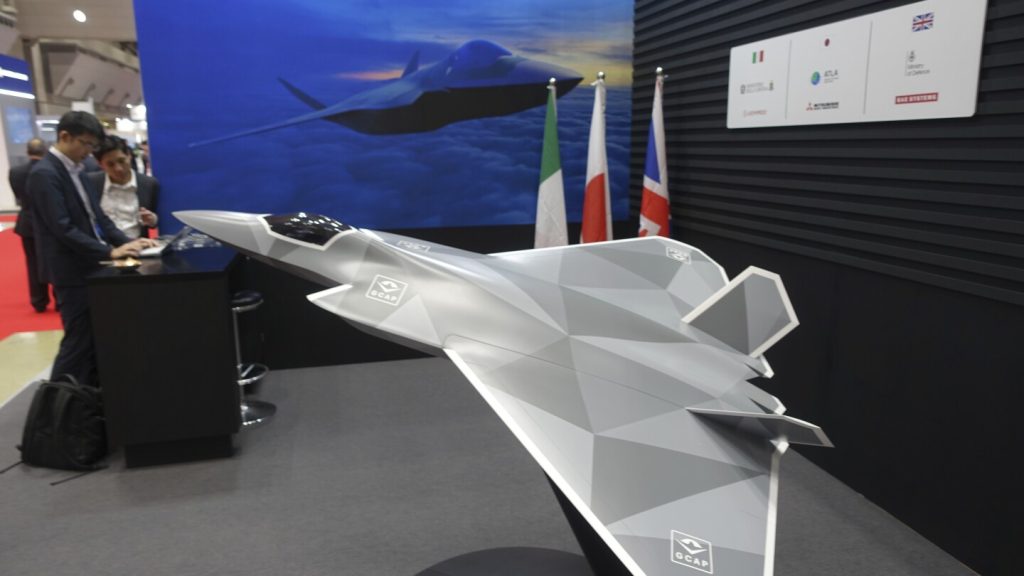Japan, the U.K., and Italy have agreed to accelerate the joint development of a next-generation fighter jet as part of the Global Combat Air Program (GCAP). This collaboration aims to strengthen cooperation among the three countries in the face of increasing threats from China, Russia, and North Korea. The new stealth fighter jet is set to replace Japan’s F-2s and Eurofighter Typhoons, with deployment expected by 2035. A trilateral government organization called the GCAP International Government Organization (GIGO) will be established by the end of this year to oversee the aircraft’s development.
The defense ministers of Japan, the U.K., and Italy met on the sidelines of the Group of Seven defense ministers meeting in Naples, Italy, to discuss the progress of the joint fighter jet project. Several private sector companies, including Mitsubishi Heavy Industries, BAE Systems PLC, and Leonardo, are participating in the project. GIGO, which will be based in the U.K. and headed by a Japanese official, will be responsible for managing the development of the aircraft. The parties involved are on track to sign their first contract next year, despite concerns over changes in leadership in both Japan and the U.K.
The joint development of the next-generation fighter jet is seen as a significant opportunity for Japanese suppliers and the country’s industrial base. MHI’s Japan program senior representative for GCAP, Akira Sugimoto, highlighted the importance of Japanese suppliers joining the project and leveraging their outstanding technologies. The collaboration is expected to enhance the capacity of Japanese suppliers to develop equipment and contribute to a better business environment and stability. Japan, which is rapidly expanding its military capabilities, aims to counter China’s assertiveness and strengthen its defense industry through joint projects like the GCAP initiative.
Japan has recently eased its arms export restrictions to allow foreign sales of the future fighter jet and licensing back of weapons, such as surface-to-air PAC-3 missile interceptors. This move is part of Japan’s efforts to enhance its defense capabilities and support its strategic partnerships with other countries. The joint fighter jet project will not only allow Japan to modernize its defense capabilities but also contribute to the stability and security of the region. By collaborating with the U.K. and Italy, Japan is taking proactive steps to address evolving security challenges and ensure its readiness to respond to potential threats in the future.
The GCAP initiative marks a significant milestone in the defense cooperation between Japan, the U.K., and Italy, as they work together to develop a cutting-edge fighter jet for deployment in the mid-2030s. The establishment of GIGO demonstrates the commitment of the three countries to effectively manage the joint development project and ensure its successful implementation. The involvement of leading defense companies from each country, including Mitsubishi Heavy Industries, BAE Systems PLC, and Leonardo, highlights the expertise and capabilities that each partner brings to the table. The collaboration in developing a next-generation fighter jet reflects a shared commitment to enhancing regional security and defense capabilities in response to the evolving threat landscape.
As the project progresses towards the signing of the first contract next year, the parties involved are working towards a common goal of delivering a high-quality fighter jet that meets the defense needs of all three countries. The successful implementation of the GCAP initiative is expected to strengthen the defense industrial base of Japan and contribute to the overall security and stability of the region. With the establishment of GIGO and the active involvement of private sector companies, the next-generation fighter jet project is poised to be a significant milestone in trilateral defense cooperation and a key element in addressing current and future security challenges faced by Japan, the U.K., and Italy.


